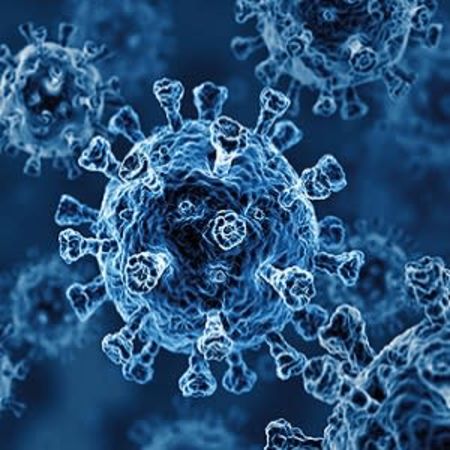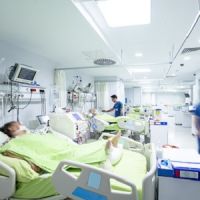Acute respiratory stress syndrome is one of the primary ways COVID-19 infection manifests in the patient. COVID-19 injures the vascular endothelium, which can lead to multiorgan failure even in young patients without any comorbidities. A wide variation in mortality rates indicates that the key to improving outcomes of ventilatory support could be in a case-adjusted management approach.
The goal of ventilatory support in ARDS is to improve lung compliance while keeping ventilator-induced lung injury (VILI) and patient self-induced lung injury (P-SILI) to a minimum. This is achieved by high levels of positive end-expiratory pressure (PEEP), recruiting manoeuvres, and prone positioning.
Clinical Features
In the initial phase of COVID-19 related respiratory distress, the patient continues to have good lung compliance, high minute ventilation, and limited infiltrates (ground -glass appearance on CT) that points to interstitial oedema. Dyspnoea is not usually very overt. Highly activated coagulation cascade and increased serum D-dimer levels are other regularly reported clinical features.
Patients can be divided into two conceptual extremes of Type L or H groups, with most patients falling across the spectrum. Type L patients have low lung elastance, lower lung weight, and a low response to PEEP. Type H patients have a high lung elastance, higher lung weight, and high PEEP response with significant consolidations. Type L patients have a higher likelihood of disease stabilisation, but depending on the severity of disease and patient response to treatment, patients can deteriorate to Type H.
Based on these features, it is easy to see how endothelial damage contributes to the disruption of pulmonary vasoregulation, hypoxaemia triggered by ventilation-perfusion mismatch, and thrombogenesis. In addition, care has to be taken to not cause patient self-induced lung injury, P-SILI, caused by intense tidal strains due to the patient’s respiratory efforts.
Under a swiftly evolving environment, it is advised to adhere to standard lung-protective approaches and ensure that responses like oedema and iatrogenic damage are not triggered by inattention to fluid overload and cardiac output demands.
CARDS Lung
Type L patients can tolerate larger tidal volumes (7-8 mL/kg ideal body weight) without increasing the risk of VILI compared to those traditionally prescribed to ARDS.
The key issue in this early stage is disrupted vasoregulation that may lead to profound hypoxaemia. Increasing FIO2 can be effective. In mild cases, noninvasive supports such as high-flow nasal O2, CPAP, Bi-PAP can help stabilise the patient. If not, the continued spontaneous inspiratory efforts can cause P-SILI through tissue stress, raised pulmonary transvascular pressures, vascular flows, and fluid leakage.
Some of the ways this cycle can be interrupted include
- Lower PEEP (8-10 cm H2O)
- Increasing mean transpulmonary pressures by higher PEEP or inspiratory-expiratory ratio inversion helps redirect blood flow
- Early intubation and effective sedation
In the absence of early intervention, oedema in the lungs can get aggravated either due to the disease or P-SILI leading to type H phenotype. Over time, VILI superimposed with viral disease causes oedema and inflammation, generalised as well as local thrombogenesis, intense release of cytokines, overload of the right ventricles, and eventually systemic organ dysfunction.
If the patient reaches this state, it is best to employ traditional strategies such as higher PEEP (≤15 cm H2O), decreased tidal volume (6 mL/kg), and prone positioning while reducing oxygen consumption to a minimum.
Classifying patients into type L or H phenotype help identify suitable ventilatory support approaches determined by the underlying physiology.
Source: JAMA
Image credit: iStock
References:
Marini JJ, Gattinoni L (2020) Management of COVID-19 Respiratory Distress. JAMA. doi:10.1001/jama.2020.6825
Latest Articles
ARDS, respiratory distress, COVID-19, CARDS
Acute respiratory stress syndrome is one of the primary ways COVID-19 infection manifests in the patient. COVID-19 injures the vascular endothelium, which...



























